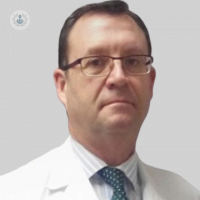All about cataract surgery
Written by:It is a disease that affects the eye, causing more or less rapid progressive reduction of vision and can end in blindness.
I have been diagnosed cataracts What is?
It is the progressive lens opacification, the lens on the eye behind the iris, allowing light rays to focus at the center of the retina.
Normally, the lens is transparent. It prevents loss of transparency to light properly traverse. Accordingly, vision is impaired.
What are the causes?
The most common cause is age. Cataracts are manifested in 10% of people under 65, 30% of people aged between 65 and 75 years, 50% between 75 and 85 years and 70% after 85 years. The normal aging process involving hardening and lens opacification. The age-related cataracts usually affect both eyes, but differently, because one eye is more affected than the other.
The following factors increase the risk of developing cataracts:
- Advanced age
- Diabetes
- Family history of cataracts
- Prolonged exposure to sunlight
- Smoke
- Obesity
- Arterial hypertension
- Previous injuries or inflammations that has suffered the eye
- If you have had any previous eye surgery
- Prolonged use of steroids, especially the combination of inhaled steroids and steroid for oral use.
What are the symptoms?
Cataracts are accompanied by visual symptoms quite characteristic:
- Blurred vision, far more often.
- Myopization: people find that they can be read without his glasses presbyopia.
- attenuated perception of colors and contrasts.
- Double vision in one eye
- Intolerance to light (photophobia) in the presence of bright lights such as car headlights.
- The need for a clearer light for reading and other activities.
In general, the falls are accompanied by a decrease in visual acuity, ie, vision and usually does not improve despite changing glasses. In addition, it can have a direct impact on everyday activities such as driving license loss. When cataracts are very advanced, the pupil becomes grayish or whitish.
What treatments are available?
The only possible treatment Ophthalmology is surgery. Eye drops have not proved effective in reducing or slowing the development of cataracts. Some preventive measures can help delay the development of cataracts. For example, it is advisable to protect the eyes from the sun, stop using snuff and, in the case of people with diabetes, control blood sugar more rigorously.
The surgery involves removing the opacified crystalline lens was replaced by a. The most common procedure is called phacoemulsification.
After making a small incision on the edge of the cornea, a small instrument that uses high-frequency ultrasound, which breaks the center of the opaque lens and carefully suctioned out it is introduced.
After the surgeon replaced with intraocular lens (IOL) of plastic, silicone or acrylic. The new clear lens allows light to pass through the retina and properly focus
Basically two types of lenses are implanted. With the monofocal lens we get restore transparency of the optics of the eye and look the patient does not require glasses for distance vision. But also in many of the patients can implant a multifocal lens so you can see without glasses at all distances, far and near.
monofocal lenses
Monofocal lenses are intended to provide vision correction to a single distance is short, medium or long distance.
Most people who choose monofocal IOLs do to correct distance vision and wear glasses for reading and other activities requiring near vision.
The person whose LIO has graduated to correct near vision, need glasses to see distant objects clearly.
Patients with astigmatism may require implantation of a toric IOLs to correct it.



